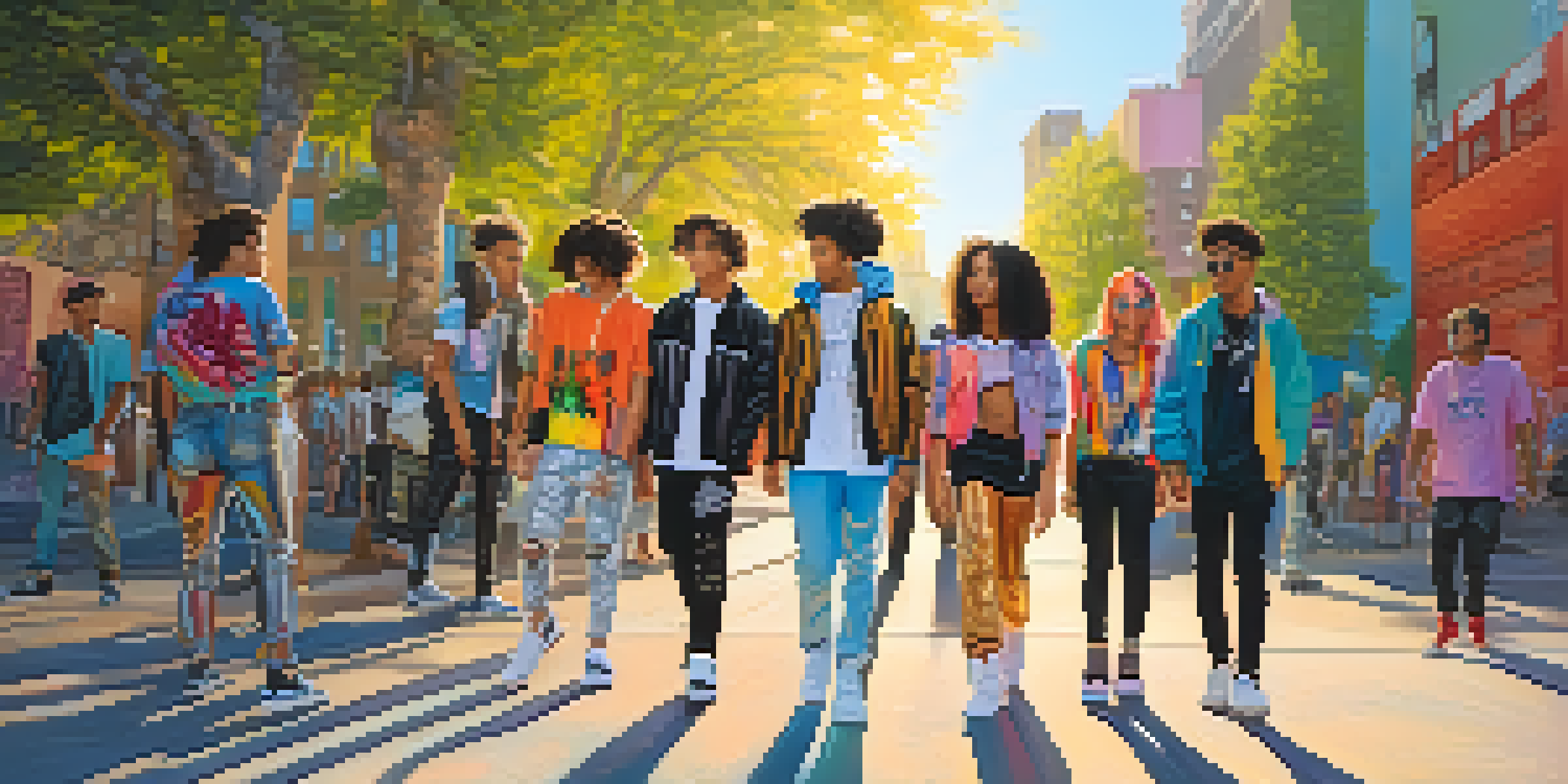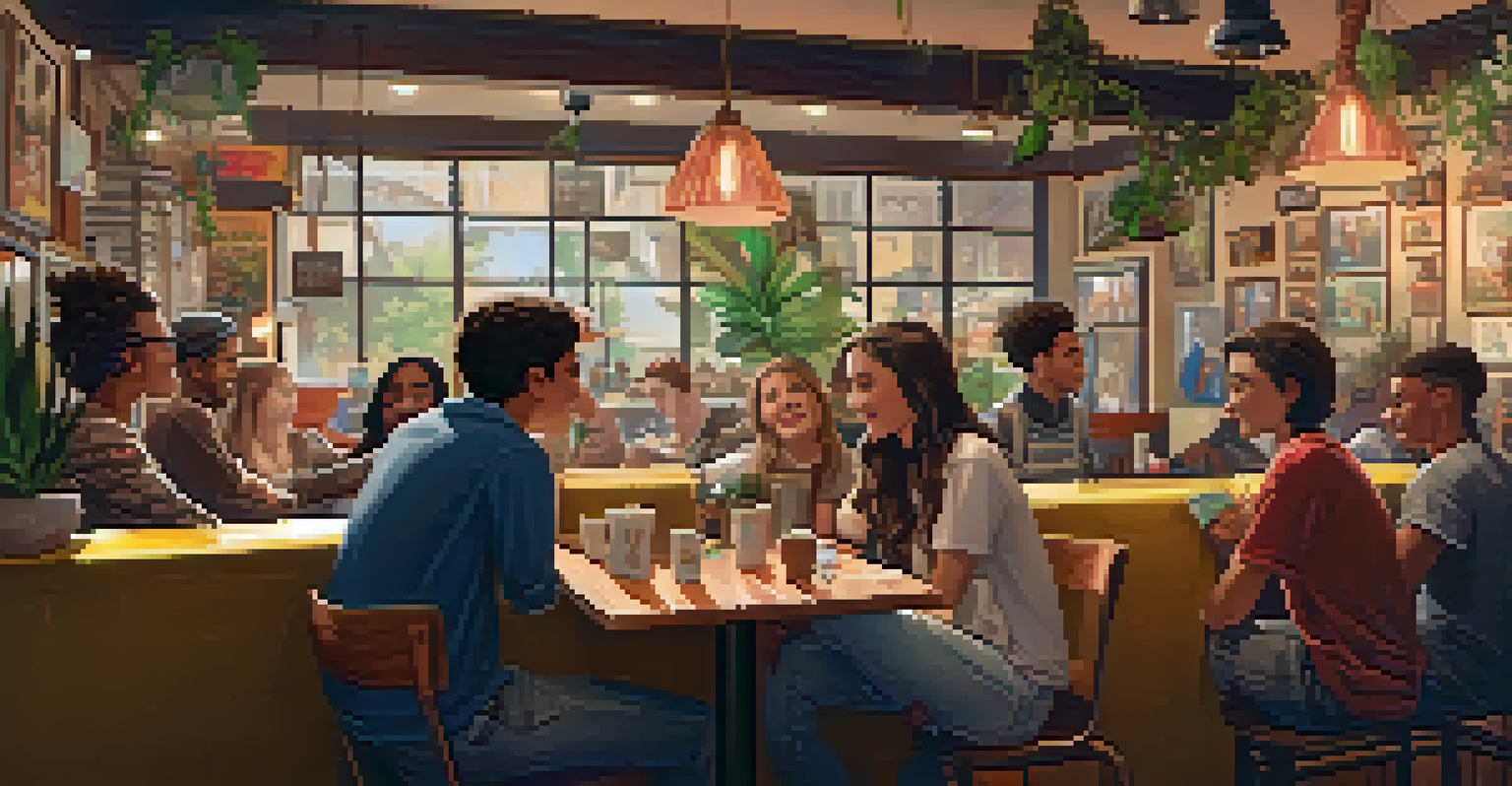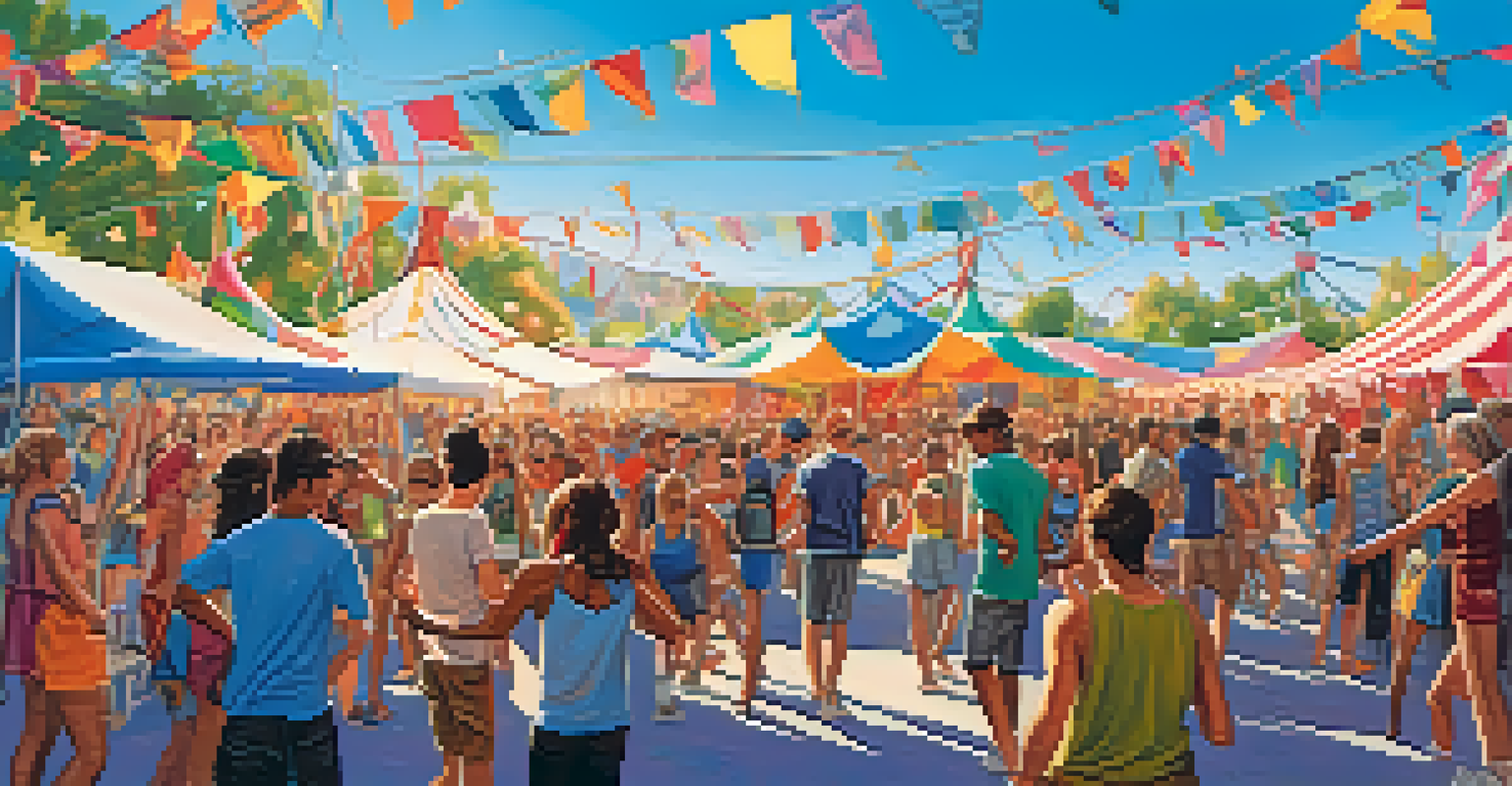Youth Subcultures and Their Representation in Hollywood

Understanding Youth Subcultures: A Brief Overview
Youth subcultures are groups of young people who share distinct values, behaviors, and interests that set them apart from the mainstream. These subcultures often emerge in response to societal influences, creating a unique identity for their members. From punk and goth to hip-hop and skater cultures, each group has its own style, music, and social norms that resonate with its followers.
Subcultures allow us to explore our identity outside the mainstream, creating space for our unique expressions.
These subcultures serve as a form of self-expression and community for youth, offering a sense of belonging during formative years. They reflect the diverse experiences and struggles of young people, often acting as a reaction to cultural or political climates. Understanding these dynamics helps us appreciate how youth navigate their identities in a complex world.
In recent years, the rise of social media has further amplified these subcultures, allowing them to connect beyond geographical boundaries. As a result, their influence on fashion, music, and art has become more pronounced, creating a rich tapestry of cultural expression. This evolution sets the stage for how Hollywood represents these vibrant youth communities.
The Historical Context of Youth Subcultures in Film
Hollywood has a long history of depicting youth subcultures, often reflecting societal attitudes and historical contexts. In the 1950s, films like 'Rebel Without a Cause' showcased the angst and rebellion of teenagers, highlighting a growing generational divide. This era marked the emergence of the 'teenager' as a distinct demographic, and Hollywood began to explore their complexities.

As the decades progressed, different subcultures found their way to the silver screen. The 1980s brought us classics like 'The Breakfast Club,' which examined the lives of high school students from diverse backgrounds. Each character represented a different subculture, illuminating the struggles and triumphs of youth during this formative stage.
Youth Subcultures Shape Identity
Youth subcultures offer a sense of belonging and self-expression, reflecting diverse experiences and societal influences.
These films not only entertained but also sparked conversations about identity, belonging, and societal expectations. They played a crucial role in shaping public perceptions of youth subcultures, often romanticizing or vilifying them. This historical lens is essential to understanding how these representations have evolved in contemporary cinema.
The Role of Stereotypes in Representing Youth Subcultures
One of the most significant challenges in Hollywood's portrayal of youth subcultures is the reliance on stereotypes. While these archetypes can make storytelling more accessible, they often oversimplify the rich diversity within each group. For example, the punk culture is frequently depicted as chaotic and aggressive, ignoring the nuances of individual experiences and motivations.
Cinema is a reflection of society, including its youth and subcultures; the more diverse the portrayal, the richer our understanding becomes.
Stereotypes can perpetuate harmful narratives, leading to misunderstandings and stigmatization. When films portray characters in one-dimensional roles, they risk alienating real-life individuals who identify with those subcultures. This can create a disconnect between the audience's perception and the authentic experiences of youth.
However, some films strive to break away from these stereotypes by presenting more complex characters. By showcasing the shared humanity and struggles within these subcultures, filmmakers can promote empathy and understanding. This shift is crucial for fostering a more accurate representation of youth in Hollywood.
Positive Representations of Youth Subcultures in Recent Films
In recent years, there has been a noticeable shift towards more positive representations of youth subcultures in film. Movies such as 'Lady Bird' and 'The Edge of Seventeen' depict realistic portrayals of teenagers navigating their identities and relationships. These films highlight the challenges faced by young people while celebrating their unique qualities and resilience.
Such narratives encourage audiences to empathize with characters from diverse backgrounds and experiences. By showcasing the richness of youth subcultures, filmmakers can challenge stereotypes and promote understanding. These stories resonate with viewers, often reflecting their own experiences and struggles.
Hollywood's Evolving Portrayal
Filmmakers are increasingly moving toward authentic representations of youth subcultures, challenging stereotypes and promoting understanding.
Moreover, these positive portrayals can inspire young people to embrace their identities and find strength in their communities. As Hollywood continues to evolve, the hope is for even more authentic and uplifting representations of youth subcultures that reflect the complexities of real life.
The Influence of Social Media on Youth Subculture Representation
Social media has dramatically changed the landscape of how youth subcultures are represented in Hollywood. Platforms like TikTok and Instagram allow young people to express themselves and connect with others, forming communities that transcend traditional boundaries. This digital presence often influences filmmakers, who are keen to tap into current trends and authentic voices.
As a result, we see a more dynamic representation of youth subcultures in film and television. Creators are increasingly drawing inspiration from the realities of online culture, incorporating elements like fashion, language, and social concerns into their stories. This blend of digital and cinematic storytelling creates a more relatable experience for young audiences.
However, it’s essential for filmmakers to navigate this digital influence thoughtfully. While social media can amplify diverse voices, it can also lead to the commodification of youth cultures. Striking a balance between authenticity and commercial interests is crucial in ensuring that representations remain true to the essence of these subcultures.
Criticism and Controversies Surrounding Representations
Despite progress, Hollywood's representation of youth subcultures is often met with criticism and controversy. Many argue that mainstream portrayals can dilute the authenticity of these groups, making them palatable for broader audiences. This commercialization can erase the complexities and struggles that define many youth subcultures, leading to a misunderstanding of their significance.
Additionally, there are ongoing discussions about the lack of diversity within these representations. Many films fail to accurately depict the intersectionality of identity, often sidelining voices from marginalized backgrounds. This oversight perpetuates a one-dimensional view of youth culture that does not reflect the reality of many young people's experiences.
Social Media's Impact on Representation
The rise of social media has transformed how youth subcultures are depicted in film, encouraging creators to incorporate authentic voices and trends.
These criticisms highlight the need for a more nuanced approach to storytelling in Hollywood. By prioritizing authentic narratives and diverse voices, filmmakers can create a richer tapestry of youth culture that resonates with a broader audience. Addressing these concerns is vital for fostering a more inclusive representation of youth in cinema.
The Future of Youth Subculture Representation in Hollywood
Looking ahead, the future of youth subculture representation in Hollywood holds great promise. As audiences demand more authentic and diverse stories, filmmakers are increasingly recognizing the value of inclusive narratives. This shift can lead to richer portrayals that resonate with younger viewers and reflect their lived experiences.
The rise of independent films and streaming platforms has also opened doors for marginalized voices, allowing for a broader range of stories to be told. These platforms often prioritize unique narratives that challenge conventional portrayals, paving the way for more authentic representations of youth subcultures. This democratization of storytelling is a significant step toward inclusivity.

Ultimately, the evolution of youth representation in Hollywood will depend on the willingness of creators to listen to young voices and embrace diversity. By doing so, they can craft stories that not only entertain but also educate and inspire future generations. The hope is for a Hollywood that truly reflects the vibrant tapestry of youth culture in all its complexity.